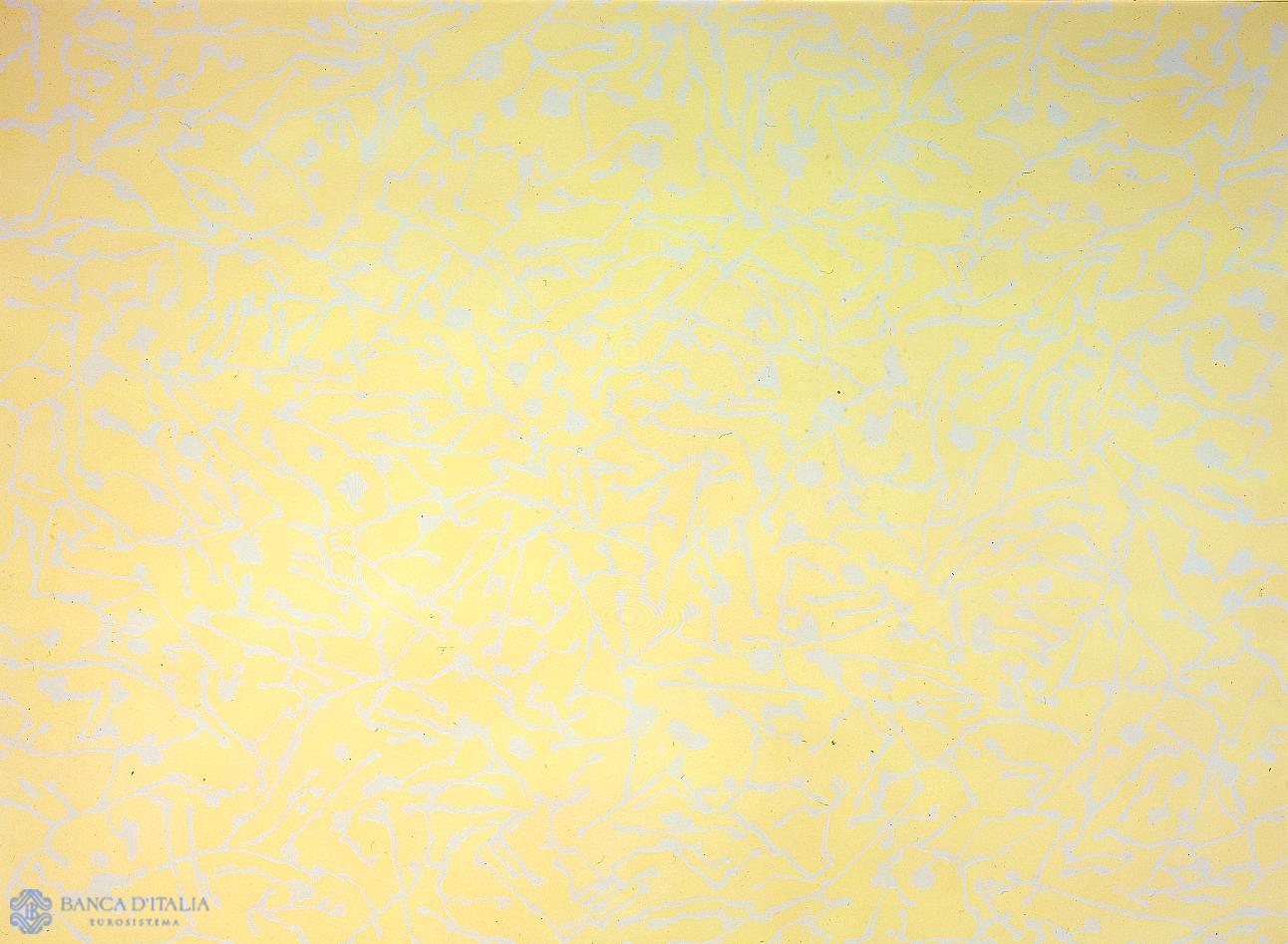Against the uniform yellow backdrop, tending to ochre, the brushstrokes are applied – rapid, darting, dispersed over the entire surface of the large canvas. These too are in just one colour, vacillating between sky-blue and azure. For Satta, this sophisticated chromatic oscillation is important, obtained through infinite glazes that conceal and transform the original shade of the colour: an oscillation that lends the work a striking mobility, almost to the edge of perceptive ambiguity.
Already in the mid-1970s, Satta had distanced himself from the implicit tautology of the theory underpinning so-called analytical painting. This was especially evident in the way he understood light – one of the fundamental components of pictorial grammar – not as a simple ingredient, an element of syntax, one method among other possible methods of artistic practice, but as an absolute and totalizing demon, as the wholeness of meaning. In the decades that followed, he would gradually begin to recover within his work a space for the freely written sign that now fled from the perfect geometry in which it had been inserted and, almost immersed in the light mantle of colour, designated a spatiality through which that brief and light gesture travelled and was measured: a strong space, as this painting also shows, verging on an utterly stark emotion.
Vincenzo Satta, Senza titolo
Untitled
Painting
20th century AD
Abstract

Artist
Date
1991
Material and technique
Oil on canvas
Measurements
150 x 200 cm
Compiler
Fabrizio D'Amico
